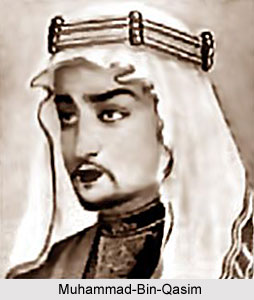Causes of Foreign Invasion in India can be attributed to several factors including the alluring economy of India, its political weaknesses and fragile set-up of Indian society. Invasions by the Arabs and the Turks marked the initiation of Foreign Invasion in India. The rise and growth of Islam is an important event in the medieval history of India. The Arabs and the Turks, the first converts of Islam, in order to spread their new religion and carry on military conquests, invaded India.
Economic Prosperity of India
In the medieval period, India was a prospering country. Socially, the caste-system existed but it had not grown rigid. The position of the women was definitely not equal to men yet women enjoyed a respectable position. Hinduism was the most accepted religion though Buddhism was also quite widespread. Economically, India was prosperous and flourishing. Thus at that time, India did not suffer from the weaknesses which crept up afterwards in the 11th and the 12th centuries. The wealth and prosperity of India was one of the prime factors which lured the foreigners to invade India. Muhammad-Bin-Qasim attacked Sindh in 711 A.D. The meagre monetary resources of Sindh, its military weakness, sharp social divisions, indifference of other Indian rulers towards the fate of Sindh, the pre-eminence of arms and military tactics of the Arabs and the incompetence of Dahar were the main reasons of the success of the Arabs. The Turks invaded India in the eleventh and twelfth century. The Turks are given the credit of establishing the Muslim rule in India. Sultan Mahmud of Ghazni was the first ruler who was successful in breaking up the military strength of the Hindus and plundering the wealth of India.
 Political Weakness in India
Political Weakness in India
Political weakness was another cause of the defeat of the Indians. During the medieval period, India was politically divided into many states which constantly fought against each other. After emperor Ashoka, India could not be united under one rule. The attempts to unite India under one rule failed even during medieval times. But, though India was divided politically, yet, there were many Rajput states at that time which were far more widespread and powerful in material resources in comparison to the Muslim invaders. Thus, the division of India into many states cannot be accepted as a valid reason of its defeat. The most important cause of the weakness of India was that Rajput states were engaged in constant fights against each other for power and glory and failed to unite themselves against a common enemy, even in the greatest hour of danger to their country, culture and religion. Furthermore, the Rajputs failed to foresee the consequences of the success of the Turks in India.
Weak Social System in India
The prevalent social condition of the medieval time also weakened India. With time, the social set-up in India started becoming more and more fragile. Caste system, practice of untouchability, gross social inequality and distinctions and inequitable position of Indian women contributed to the main weaknesses of the Indian society. Political unsteadiness and absence of consolidation of India even under few strong unified states also led to its social degeneration. The deterioration in religion was also responsible for the defeat of the Indians. The liberalism of Hindus was its greatest strength but, afterwards, became its greatest weakness as well when it had to compete with Islam and Christianity. Besides, the monopoly of the Brahmanas over religion and the Sanskrit language excluded the common people from the knowledge of true religion. It led to the division of Hinduism in different sects and also ignorance about religion among the populace. Therefore, the Hindus failed to accept the challenge of foreign invaders in the name of one religion, one culture and, thereby one country.
A number of other factors were also responsible for the incursion of the foreign forces. Economically, India was a rich country but the wealth was unevenly distributed. The cause of the weakness of the Indians had been that they had failed to utilise that wealth to build their military strength which alone could provide safety to their wealth. Instead they stored the wealth in temples and palaces of kings which tempted foreign invaders. Thus the political, social, religious, moral, and cultural weakness of the Indians and also their increased prosperity in their own way constituted the causes of the invasions by the foreign powers.






































